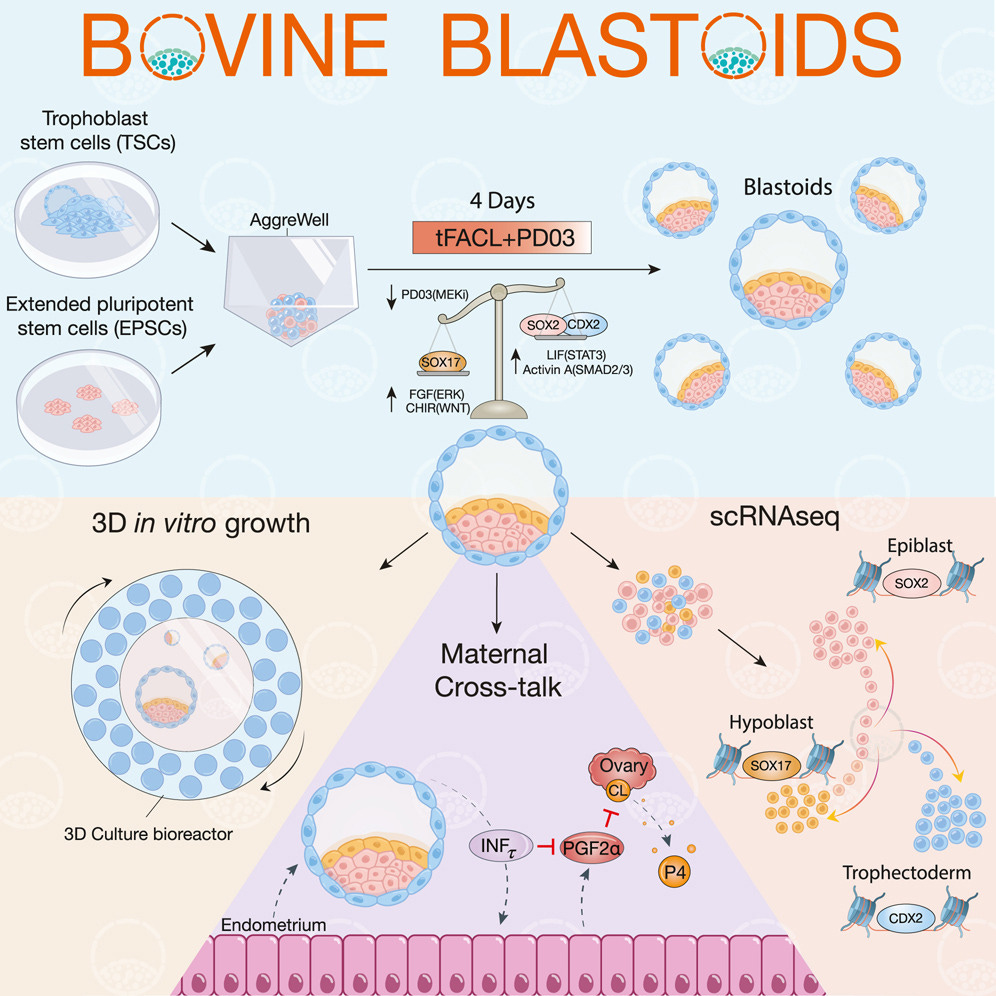Scientists Create Artificial Embryos: A Breakthrough for Livestock and Beyond
Researchers have recently made a significant breakthrough in creating artificial embryos, known as blastoids, for livestock animals like cows. This discovery could have far-reaching implications not only for the livestock industry but also for understanding human reproduction and even endangered species conservation.
In a study [1] published in the journal Cell Stem Cell, a team of scientists led by Carlos A. Pinzón-Arteaga and colleagues developed an efficient method to generate bovine blastocyst-like structures, or blastoids, by assembling two types of stem cells: trophoblast stem cells and expanded potential stem cells. These blastoids closely resemble natural embryos, known as blastocysts, in their appearance, cell composition, and gene expression.
So, why is this discovery so important? For one, it could revolutionize the livestock industry by improving reproductive efficiency. Currently, the supply of embryos for farm animals is limited, making it difficult to study and understand the mechanisms of embryo formation and implantation. With the ability to create artificial embryos, researchers can now study these processes in more detail, potentially leading to improved reproduction rates and healthier animals.
But the potential applications of this research go beyond just livestock. The ability to create artificial embryos could also help scientists study human reproduction and embryonic development. By understanding the processes that occur during the early stages of development, researchers may be able to develop new treatments for infertility or even prevent certain genetic disorders.
Additionally, this breakthrough could have significant implications for endangered species conservation. Many endangered animals have low reproduction rates, making it difficult for their populations to recover. By creating artificial embryos, scientists could potentially increase the number of offspring produced by these animals, helping to boost their populations and prevent extinction.
To create the bovine blastoids, the researchers first collected stem cells from cows and then assembled them into structures resembling blastocysts. They then placed these blastoids in a special 3D suspension culture, which allowed them to grow for more than two weeks. The researchers also found that the blastoids were able to elicit maternal recognition of pregnancy when transferred to recipient cows, further demonstrating their similarity to natural embryos.
While this research is still in its early stages, the potential applications are vast. In the future, scientists may be able to create blastoids for other mammals, including humans, opening up new possibilities for studying embryonic development and improving reproductive health.
References
Bovine blastocyst-like structures derived from stem cell cultures https://doi.org/10.1016/j.stem.2023.04.003




